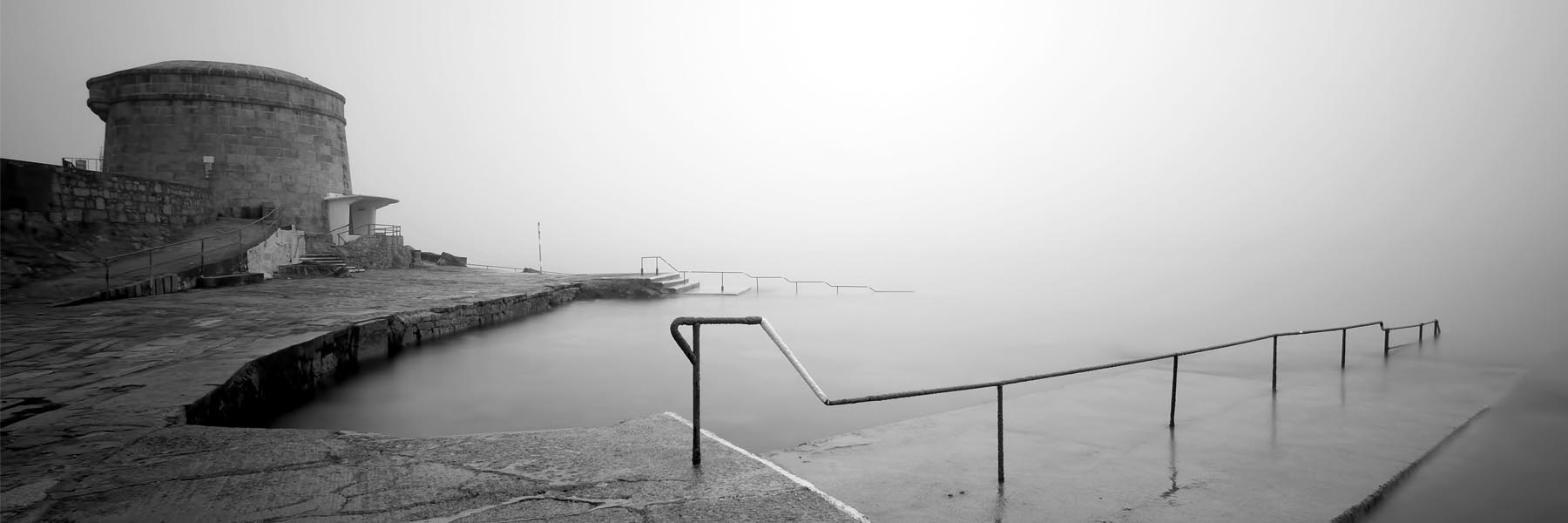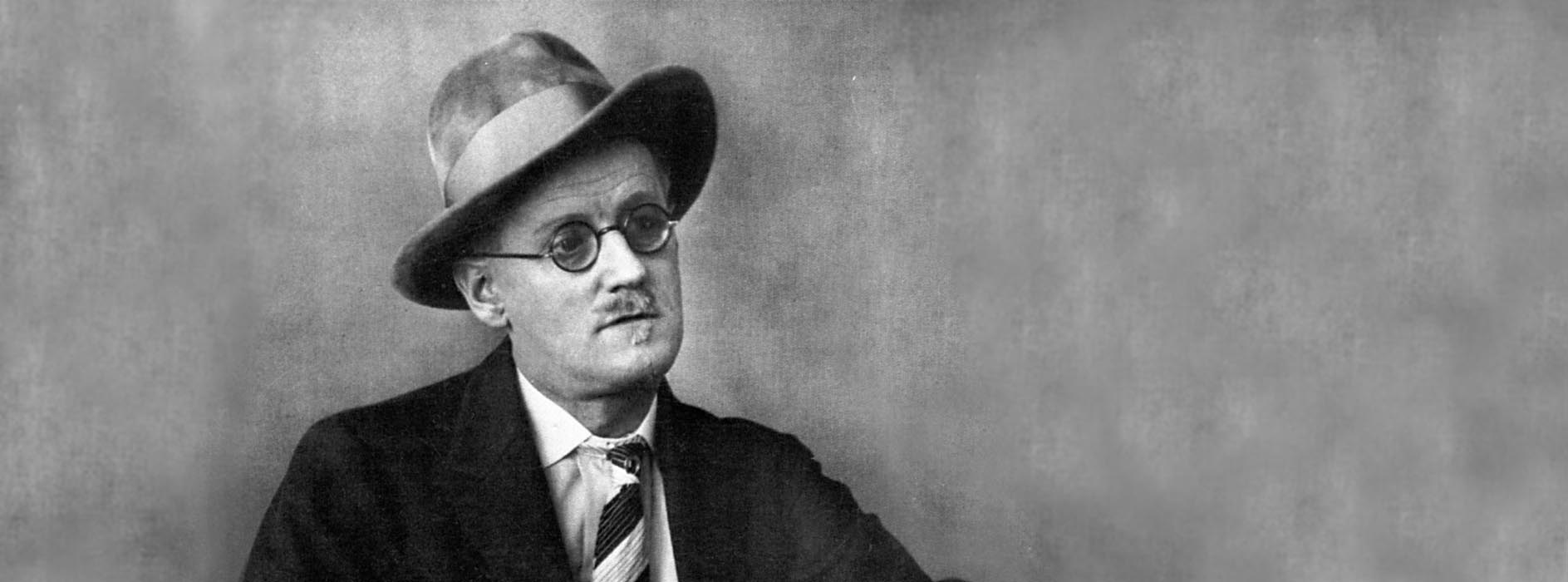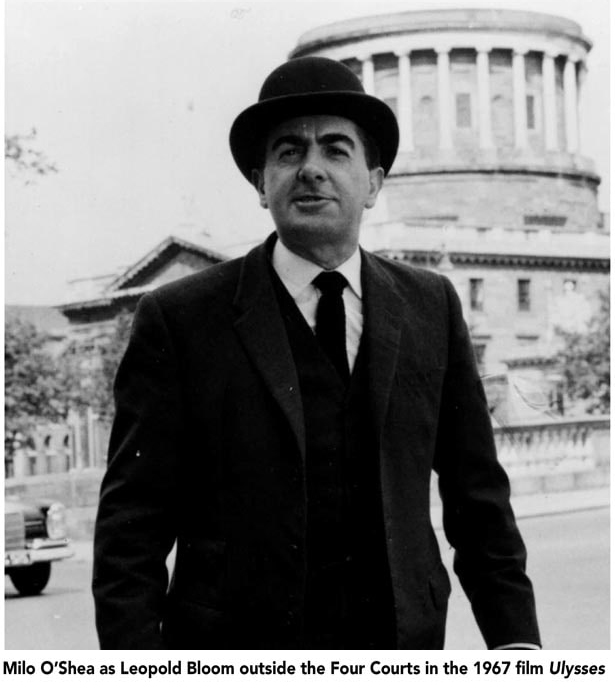Blooming lawyers

Dublin’s legal fraternity in Joyce’s Ulysses
To celebrate the 100th anniversary of Joyce’s Ulysses, we reproduce Brian McMahon’s article, first published in the October 2004 Gazette, focusing on Dublin’s legal fraternity, which is a strong thread running through the novel.
James Joyce’s Ulysses is set in Dublin on 16 June 1904, and its two principal characters are Leopold Bloom and Stephen Dedalus. Bloom is the novel’s hero, and his journey around Dublin echoes Odysseus’ journey in Homer’s Odyssey.


The novel opens in the Sandycove Martello Tower near Dun Laoghaire, and it is on Stephen’s journey back to the city, when he calls into the Irishtown house of his uncle, Richie Goulding, that the first legal reference occurs.
Richie Goulding is a legal costs drawer who works for the firm Collis and Ward, a name to which he adds his own on his legal costs bag. When Stephen calls, he is sitting in bed drafting bills for masters Goff and Shapland Tandy.
Thom’s Official Directory 1904 shows that the firm of Collis and Ward was located at 31 Dame Street, and two of the taxing masters then working at the consolidated taxing office of the Supreme Court were James Goff and Shapland Morris Tandy.
Cockles and mussels
Leopold Bloom, after breakfasting at home in Eccles Street, walks across the city to Irishtown to join the funeral procession of Paddy Dignam. On the journey back across the city to Glasnevin Cemetery, Martin Cunningham tells those in the carriage, including Bloom, how Reuben J’s son tried to commit suicide by jumping into the Liffey, but was saved by a workman who was rewarded with a florin.
The Irish Worker of 2 December 1911 reported a very similar incident, in which Reuben J Dodd, son of Reuben J, jumped into the Liffey and was saved by a workman who, as a consequence, got sick and missed work.
When his wife sought money from Reuben J, he reluctantly gave her 2s 6d. When Joyce was a child, his father had to sell property to pay off debts to Reuben J, a moneylender and costs drawer, starting the family’s descent into poverty.
The young Joyce knew the young Reuben J Dodd, but disliked him for obvious reasons. Reuben J Dodd became a solicitor in 1901. When the BBC broadcast this extract from Ulysses in the 1950s, Dodd successfully sued for defamation, saying he had jumped into the Liffey after his hat.
When leaving Glasnevin, Bloom briefly meets Paddy Dignam’s employer, John Henry Menton, solicitor. Thom’s Directory 1904 lists a solicitor named John Henry Menton practising from 27 Bachelor’s Walk.
After the funeral, Bloom goes to the offices of the Evening Telegraph in Abbey Street, now gone, but marked by a plaque outside Eason’s. He joins the conversation, in which JJ O’Molloy, a once-promising young barrister now fallen on hard times, and Professor MacHugh discuss the prosecution of hawkers in the Phoenix Park.
The Freeman’s Journal of 9 June 1904 reported the prosecution of seven people for hawking wares in places forbidden by public notice before Mr Mahony, divisional magistrate in the Northern Police Court.
The wares were sold at the site of the murder by the Invincibles of the chief secretary and under-secretary to the lord lieutenant in 1882, and were postcards memorialising this event. The seven were convicted and fined 2s 6d and costs each.
The oul’ triangle
JJ O’Molloy then begins praising the speech of Seymour Bushe KC in the Childs murder case. When his name is mentioned, the editor confuses him with Charles Kendall Bushe, and Professor MacHugh alludes to the scandal that prevented his appointment as a judge.
Seymour Bushe was one of the foremost barristers of his day and a great orator. He was the great-grandson of Charles Kendall Bushe, chief justice of the King’s Bench, Ireland, from 1822 to 1841. At that time, the King’s Bench and Common Pleas had a chief justice each: Exchequer, a chief baron; and Chancery, a lord chancellor.
Seymour Bushe missed judicial appointment because of involvement in an adulterous affair. In a trial held in October 1899, attended by James Joyce, Bushe successfully defended Samuel Childs of the murder of his 76-year-old brother at 36 Bengal Terrace, beside Glasnevin Cemetery.
JJ O’Molloy then begins to tell a story about the famous Chief Baron Christopher Palles, chief judge in the Court of Exchequer in 1904, but unfortunately is cut short. The conversation returns to oratory, and mention is made of Mr Justice Fitzgibbon’s style of discourse and his speech to the Trinity College Historical Society.
In 1904, Gerald Fitzgibbon was a judge of His Majesty’s Court of Appeal. His son would go on to be a judge of the Supreme Court of the Irish Free State.
In the early afternoon, the setting is the National Library of Ireland, where Stephen is setting out his theory on Hamlet to others in the librarian’s office. In the course of the conversation, John Eglington refers to Judge Barton’s search for clues that Shakespeare was Irish, and the librarian, just before leaving to deal with a query from Bloom, refers to Mr Justice Madden’s Diary of Master William Silent. Sir Dunbar Plunkett Barton was a justice of the King’s Bench.
He was a cousin of Seymour Bushe and wrote a number of studies of Shakespeare. Dodgson Hamilton Madden was also a justice of the King’s Bench: his book was an elucidation of Shakespeare using his knowledge of hunting in the west of England. Ironically, the National Library does not have a copy of that book now, but does have many of Madden’s legal works.
The strawberry beds
In the mid-afternoon, while Bloom is browsing in a bookshop, an elderly lady leaves the Four Courts, having heard the cases In lunacy of Potterton, Owners of the Lady Cairns v the Owners of the Barque Mona, and Harvey v Ocean Accident and Guarantee Corporation. This elderly lady is, perhaps, based on the lady litigants famous in the Irish courts prior to 1919 who, though unable to practise as lawyers, could prosecute cases in which they were concerned.
The Legal Diary for 16 June listed In lunacy of Potterton to discharge queries and vouch account.
The Lady Cairns case concerned a collision between the two vessels off the Kish Light in March 1904. There was an application in it on 16 June to fix time and mode of trial, and the matter was eventually heard from 21 to 23 June before the King’s Bench. The court, disagreeing with the Board of Trade report, held that the Lady Cairns was to blame for the accident.
The action was dismissed with costs, and judgment was entered for the defendant on the claim and their counterclaim. The solicitors for the owners of the Lady Cairns were D&T Fitzgerald, a very influential firm in their day. In the scene in the Evening Telegraph, it is remarked that they used to brief JJ O’Molloy.
Harvey v Ocean Accident and Guarantee Corporation involved a Mr Charles Meade Harvey, who purchased life assurance that provided that, if he should sustain any bodily injury by accident from an outward, external and visible means or cause, and die solely from the effect thereof, the corporation would pay his personal representatives £1,000.
The unfortunate man’s body was found floating in the River Lee. On 15 June 1904, the appeal of William Harvey (the administrator of the estate) from an order of the King’s Bench – following a decision against the estate on a special case stated – concluded, and judgment was reserved.
The elderly lady travels down the quays and is about to enter the offices of Reuben J Dodd – at 34 Ormond Quay Upper in 1904 – when she changes her mind and retraces her steps past King’s, the law stationers (then at 36 Ormond Quay Upper), and smiles credulously at the vice-regal cavalcade.
The cavalcade had earlier passed and been ignored by Dudley White BL, who Maurice Healy, in his memoirs, described as a clever mimic and who practised from 29 Kildare Street in 1904. The cavalcade would later be spotted by Gerty MacDowell from outside Roger Greene’s solicitors, whose offices were at 11 Wellington Quay in 1904.
Leaving the bookshop, Bloom, pondering where to eat, meets Richie Goulding and they go to the Ormond Hotel. While they are there, George Lidwell comes in. George Lidwell was the solicitor Joyce consulted in his disputes with the publisher of Dubliners, and some of the consultations occurred in the Ormond Hotel, near his office at 4 Capel Street.
Lidwell advised Joyce that, while Dublin’s vigilance committee might press for Joyce’s prosecution for the language used in the story ‘Ivy Day in the committee room’, the advisors to the Crown would not notice the story.
After dining, Bloom leaves the Ormond Hotel and walks by 12 Ormond Quay Upper, noting that it is the address of 24 solicitors, a fact Thom’s Directory 1904 confirms.
The rare oul’ times
At five in the afternoon, Bloom makes his way to Barney Kiernan’s pub on Little Britain Street and joins the company of the citizen Alf Bergman and others. When JJ O’Molloy and Ned Lambert enter, they all discuss the alleged libel of Denis Breen by publication of ‘U.p:up.’ on a postcard.
Breen had travelled with his libel from Collis and Ward to John Henry Menton, and is sent as a prank to the subsheriff’s office on 20 Ormond Quay Upper. JJ O’Molloy cites Sandgrove v Hole (2 KB 1 [1901]) and opines that the words are capable of defaming Breen. Their meaning remains a subject of debate among Joyce scholars.
O’Molloy then discusses the ‘Canada swindle’ case, first mentioned by him in the Evening Telegraph office, with Ned Lambert and tells him that the accused was remanded.
The Freeman’s Journal of 17 June reported the prosecution of James Wought, his sweetheart, and her brother before Mr Swift KC in the Southern Police Court for obtaining by false pretences £1 from Benjamin Zaretsky, and 10 shillings from Henry Crown, and defrauding Jacob Cohen of £1 by pretending to be emigration agents who could arrange passage to Canada.
Wought had several aliases, including Richards, Sparks, Saphero and Charles & Co. Wought was convicted on 11 July, though his co-accused were acquitted, and was sentenced to 12 months’ imprisonment with hard labour by the recorder.
In the novel, Alf Bergman then recalls the threat of the recorder to imprison Reuben J for taking a debt-collection action, and he and Ned Lambert mock the recorder’s gullibility. In 1904, Dublin’s recorder was Sir Frederick Falkiner.
His court was just around the corner from Barney Kiernan’s in Green Street courthouse, and it was there that James Wought was sentenced to 12 months’ hard labour. Sir Frederick was also chairman of the quarter sessions, Co Dublin. He was known as a poor man’s judge, and his biography records his reputation for humanity, though the reputation may have been more for gullibility.
Dublin, along with other Irish cities of the time, had a Recorder’s Court. Following independence, its jurisdiction was transferred to the Circuit Court by the Courts of Justice Act 1924, and the then recorder was appointed to the High Court.
Mention is then made of Arthur Courtenay and a case before Mr Justice Andrews. The former was master of the King’s Bench division and the latter a judge of it, who was notorious for the severity of the sentences he imposed.
Take me up to Monto
Bloom leaves Barney Kiernan’s in haste and, after visiting Paddy Dignam’s widow and Sandymount Strand, meets up with Stephen Dedalus in Holles Street Hospital, and they end up in Dublin’s notorious red-light district of Monto.
Following an altercation with soldiers in the Monto, Bloom and Stephen walk to the cabman’s shelter under the loop-line bridge. En route, Bloom warns Stephen of the dangers of the red-light district and, in particular, of winding up before Mr Tobias in the Bridewell.
In fact, Matthew Tobias was not the judge, but the prosecuting solicitor to the Dublin Metropolitan Police, of 4-7 Eustace Street. Indeed, he prosecuted James Wought. Bloom realises his mistake, corrects himself, and refers to Thomas Wall, chief magistrate of the DMP.
After leaving the cabman’s shelter, Bloom and Stephen go to Bloom’s Eccles Street home, where the flowing of water from the taps causes mention of the case taken against South Dublin Guardians for the over-consumption of water by Ignatius Rice, solicitor to Dublin Corporation. Such cases were a common occurrence in then drought-stricken Dublin.
The Freeman’s Journal reports the corporation’s case against the guardians as adjourned on 7 and as settled on 8 June, with the guardians agreeing to pay 4d per gallon of water in excess of their permitted amount.
Joyce’s Ulysses is enjoyed by millions around the world who know very little of Dublin city or its history. Irish people are fortunate that their enjoyment of Ulysses is enhanced by the fact that it is a depiction of a day in their capital city’s history, and Irish lawyers are more fortunate still that this depiction extends to their profession.
FOCAL POINT
‘Blooming lawyers’ nearly 20 years on
Re-reading my article on Joyce’s Ulysses nearly 20 years later, I note two errors (perhaps others can see more). Firstly, Stephen Dedalus doesn’t call into his uncle’s house on his way back to the city from the Martello Tower – he merely thinks about it; and, secondly, the National Library does have a copy of the Diary of Master William Silent. Indeed, I picked up a first edition of it myself a few years ago and learned from the bookseller that it was one of the poet Siegfried Sassoon’s favourite books.
The article itself prompted some correspondence in the Gazette that revealed some more interesting legal connections, when Brian Roche speculated in the January 2005 issue about Joyce’s possible connection to the office of Roger Greene’s solicitors. Those familiar with Ulysses will understand his reluctance to go into too much detail!
In the intervening years, I have continued dabbling in the legal background to Ulysses. I was greatly encouraged in this when, shortly after publication, Brendan Kilty SC invited me to give a talk in the James Joyce ‘House of the Dead’ on Usher’s Island.
The late Mr Justice Adrian Hardiman also gave a short introductory address, and shared with me a draft of his essay on the Childs’ murder trial, an essay that appeared under the title ‘A Gruesome Case’, alongside many other fascinating essays on Joyce and the law, in his posthumously published Joyce in Court. More recently, and just prior to his untimely death, I was in correspondence with Frank Callanan SC concerning his Green Street lecture on John F Taylor’s speech which, in Ulysses, is recalled by the company in the offices of the Evening Telegraph.
Ulysses continues to guard some of its secrets, however. The mystery of the meaning of the alleged libel of Denis Breen remains unsolved and the subject of much discussion among Joycean scholars, while my own efforts to discover whether there is any factual background to JJ O’Molloy’s story about Chief Baron Palles have proved unsuccessful. VTH Delany’s biography of Palles throws no light on it, and all my other efforts to crack the mystery have proved fruitless.
My interest in the legal background to Ulysses continues to enrich my enjoyment of the book and, indeed, my enjoyment of the history of Dublin. A few years after publication, I came by chance across James Whiteside’s weather-beaten tomb in Dublin’s Mount Jerome Cemetery, and immediately thought of the ‘Aeolus’ episode in which he is mentioned, and only last year, while passing Killiney Hill Park, I noticed that Frederick Falkiner, Ulysses’ gullible recorder, was named on the plaque at the gate as a trustee of the park.
Brian McMahon is a solicitor and head of contentious matters in An Post.
Read and print a PDF of this article here.